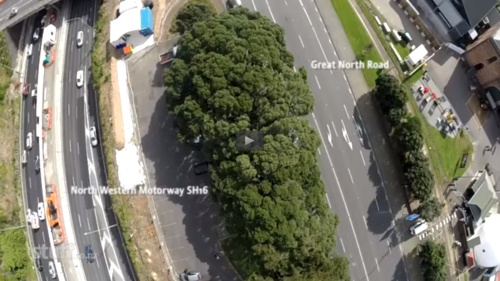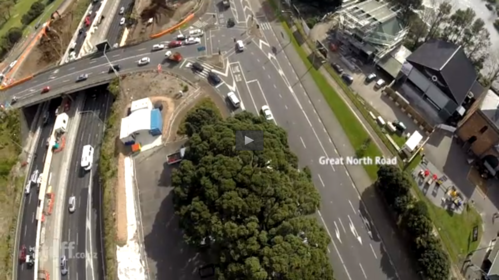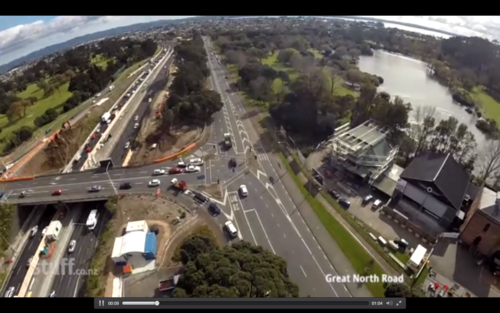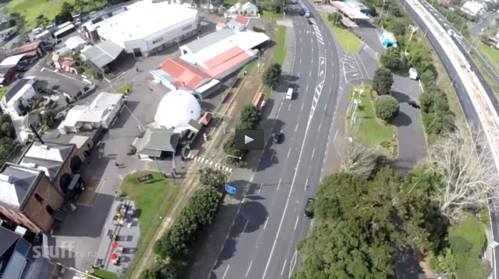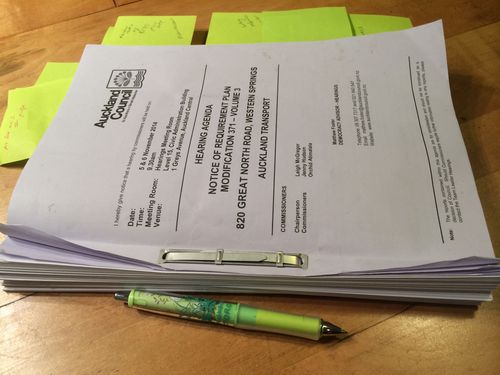When the National government introduced National Standards four years ago, I didn’t need a weatherman to know which way the wind was blowing. I’d been watching our older son acclimatise to public schools in New Haven, Connecticut, where kids and teachers alike struggled to breathe freely in the toxic atmosphere of No Child Left Behind.
You can read that story – my long, slow realisation that the testing-tail was wagging the educational dog – here, if you haven’t already. Go on. I’ll wait. It’s a good one.
“What’s the worst that could happen?” I asked at the time.
I was pretty confident of two things:
a) that the US model, or something like it, was indeed where the National/ACT policy was eventually headed (with the side effect -- some would say ultimate goal -- of disrupting the professional educational organisations)
b) that New Zealanders would never fall for something so transparently second-hand, dodgy, and unkind to children.
Over the past four years, the jigsaw pieces slotted into place; and each time they did, I retweeted the heck out of that original piece. At times, I wondered: am I being too suspicious? Am I drawing a line where others would see random dots? Are the National Party and their ACT colleagues really disingenuous enough to serve New Zealanders these warmed-up leftovers and think we won't notice?
Hey, maybe it’s just a coincidence that the Prime Minister had a cup of tea with a Minister who suddenly got all excited about charter schools, and it’ll just be a nice surprise when they bring their corporate mates - running out of options overseas, keen for fresh markets for their educational snake oil - into our schoolyards under the cover of “lifting achievement”. It’s just, y’know, pollies making policy. Flying a few kites, sinking a few cuppas.
Then, in an interview with the Herald published yesterday, Education Minister Hekia Parata blurted out her plans to link school funding to student “progress.”
Even the Herald was amazed that she should champion a “policy [that has] served only to increase the gap between the top schools and the bottom ones, penalising children at the latter.” Ms Parata, they wrote in an editorial, has “revealed the Cabinet's firm conviction that freemarket ideology is as applicable to purchasing school education as it is to buying a BMW or a nice dinner at one of Simon Gault's restaurants.”
The Minister’s advisers are apparently scrambling to correct any misapprehensions. Or as the Herald has it: “her advisers are unhappy because she has been caught out - caught out telling the truth.”
This morning, the Minister fronted on National Radio to say that she'd been mischaracterised. She conversationalised, conversationally:
“I think that at the point where a longer conversation is held on how we fund into our system there will be a whole range of factors that need to be taken into account - but they will be part of a conversation with the profession itself."
(Did I hear a loud snort from Christchurch at the notion of a "conversation" with the Minister?)
Ms Parata further clarified her position, which is to say, smokescreened mightily with:
“I think that when we’re having a discussion about funding there will be a range of factors that will need to be taken into account. But we’re not having one at the moment.”
Although even a child can translate that as "Just you wait till after the election." If you're still in any doubt, she followed up with this blanket statement:
“There is no review of funding.”
The meaning of which, as a far wilier politician once reminded us, depends on the meaning of what "is" is.
I’m no longer doubtful about whether I’m drawing a long bow here.
--
It's always fascinating to me to see how stories like this take shape and sneak into our discourse, one step at a time. Especially intensely ideological stories that present themselves as series of commonsense logical notions, which is something this government and its advisers are generally very good at. (Help me out if I’ve missed any steps here; relevant links appreciated).
The first move is to point out, quite reasonably, that some children are failing in most schools. It's a truism, but a reliable one for setting the citizenry on edge. Ignoring all relevant socio-economic factors, quickly rephrase this thought as “some schools are failing our children.”
Which ones? Well, let's introduce a testing/assessment regime, y’know, just to measure the scale and scope of the problem.
Reassure parents that this is “just to reassure parents.” When you get pushback from schools who already carefully assess children and their progress, ask them what they’re trying to hide.
Remind the people that numbers don’t lie. Lie to the people about which numbers are important.
Look a bit surprised when this data is used to assemble “league tables” that rank schools in order of average achievement on a variety of tests. Say that wasn’t at all the intention. Look even more surprised if it should happen that those who can afford to start flocking to more well off schools, tilting the achievement numbers even further. Goodness. Look at the failing schools failing even harder! What's wrong with them?
Look very surprised indeed if any schools that can get away with it start filtering out special needs children – not actively, just passively discouraging them from being there.
Meanwhile, casually introduce the notion that some people just do teaching better than others. Hard to argue with, right? Because everyone has a story about that one crappy teacher; encourage them to extrapolate. (NB avoid the corollary, which would be that some kids just do learning better than others, because that wouldn’t fly - you’d have to ask why. Hunger? Poverty? Racism? Moving around too often because housing is insecure and unaffordable? Whoa whoa, too-hard basket. Hush.)
Start musing about where all that taxpayers’ money goes. Start murmuring about exciting, new, alternative ways to deliver education, which is quite a trick when you're simultaneously yammering on about back to basics. Maybe, if we really loved our children, we’d try different kinds of schools, and “Oh, look: here’s one I prepared earlier.”
But do make it a surprise by not mentioning it during election campaigning. People love surprises.
Call the proposed schools something friendly and disarming: how about “partnership schools”? Who doesn’t like partnership? Not even lefties, LOL! Fudge the fact that New Zealand legislation already provides for different kinds of schools, and that many such schools are doing measurably brilliant things, notably the kūra kaupapa. Emphasise that you’re just adding options. Only the churlish will object to options, or ask why those options can’t be offered inside of the existing system, or point out that the new options look strangely similar to ones that have failed overseas.
Invite applications to run partnership schools before you even pass the legislation, so you can get off to a flying start. This will be easy, as you’ve been in talks with them all along, including those nice people from America, and you’ve removed any barriers to entry, like pesky teacher registration. While you’re at it, rule out the public being able to have a look at the school’s books, financial or otherwise. Speed, efficiency, are the name of the game. No need for local representation on the school board, either: what do the locals know about what they need? Hurry up: open the schools, get some kids in. Remember, you’ll need to be harvesting a year of demonstrable student “progress” just in time for the upcoming election.
If the partnership schools run into trouble getting started, give them more money, because that’s what struggling schools need. No, silly. Not all struggling schools, just these ones. (Meanwhile, chuck some more money at schools that are Doing Well – the private schools. The more resources they have, the better they do, right? Just those ones, though). When the partnership schools can’t find a way to teach all the subjects, let them “borrow” teachers off the other schools. You know, the bad schools. Presumably they’ll borrow the good teachers.
(Meanwhile, just for giggles and distraction, have a hack at intermediate schools. What a waste, eh, putting those kids into their own special space for a breather between infancy and adolescence? What could they possibly learn with two years in their own bubble, apart from social skills, time-management, open-mindedness, confidence, speaking skills, technical subjects, water safety, art, drama, music, sports, the nicely compressed opportunity to experience being junior and then senior in a given situation, and a chance to figure out who they are and what they’re interested in without the pressure of Choosing Subjects and Thinking About Careers? Jeez, who needs that kind of woolly nonsense, especially at that age? Go on, close some intermediates and set up a few mega-schools in a city that’s not in a position to fight back – do it quick, you’ll need to be harvesting those “progress” results in time for the election, too.)
Then, ever so casually, reintroduce the idea (you were knocked back on this before, but don’t let it stop you) of linking school funding to student achievement, thus "incentivising" achievement. Kids doing well? Here’s some extra dosh. Kids failing? No more money for you, fail harder. Laugh merrily when asked if this could possibly lead to any of the following:
- teaching to the test
- a curriculum based on learning answers rather than generating questions
- the steady loss of “non-testable” subjects, except in private schools and high-decile ones (art, music, sports, water safety) (even in high-decile ones like Lorde’s old school)
- a culture of cheating and tricks and fudges (at the worst, the Atlanta teacher pizza parties, where teachers spent weekends erasing “wrong” answers and putting in right ones, because otherwise their schools would lose funding.)
- the government closing “failing schools” and bringing in, oh for example, outfits like KIPP to run them.
WHOOPS! WAIT! Mistake! Pull up! Don’t mention the funding thing before the election! Because if you do, voters might actually join the dots! Especially if they’ve watched The Wire, or House of Cards.
And if you go off half-cocked on this one, voters might even get to wondering what other nasty surprises are being held in readiness for after the election in all the other sectors that matter to them.
--
That’s the trail of stale breadcrumbs – well, some of them anyway. Follow the path, children, deep into the corporate-education forest. All the way to the rotten gingerbread house.
I mean, what could possibly go wrong?
--
Of course, mine is just one way to tell this story. Having brought our kids back to New Zealand two years ago in large part because of what we were observing in US schools, it’s been horrifying and disappointing to watch these developments unfold here, one step at a time, each step cloaked in disingenuous denial about the destination.
Teachers in all sorts of schools would tell the story from slightly different angles. Parents of children with particular learning needs would tell it another way. Māori, Pasifika, immigrant parents would ask different questions about the way this is playing out. Citizens of Christchurch would certainly have their own version of this narrative.
And kids will tell you how it feels for them, if anyone will take the time to ask.
The child described in my earlier blog post is now a well-grounded Year 8 who is punishingly articulate on the subject of his own education, among many other things. He’s been reading over my shoulder this morning, and his initial response was largely unprintable. Then he started talking more calmly, and I started transcribing.
“They’re going to ruin the schools. How do you pass these tests of “progress”? By doing worksheet upon worksheet upon worksheet. But what do you learn from that? You don’t learn how to manage yourself and your time. You don’t learn how to think your way around a problem. It stifles creativity. Maybe you do better on your test score, but how are you going to manage in real life? Sure, I got high scores on those stupid tests in America. But when I got back to New Zealand, I had to learn how to cope with everything else. And the everything else is really important.”
Really important.
And yet like every schoolkid in New Zealand (except for half of the top class – commonroom voter registration drive, anyone?) he is voiceless when it comes to the polls. Which is where you come in.
Education is a universal election issue: in the recent Colmar Brunton poll, it was the top issue for voters regardless of political orientation.

It’s an easy issue to push voters on, and it’s an easy one to bamboozle them on with persuasive talk of the "long tail", and lifting student achievement, and so on.
If “education” is indeed the first thing that pops to mind when you’re asked what you care about this election season, I’d encourage you to re-read my original post, and then read more widely on the subject. I’d ask you to think about what it is you really want New Zealand schools to do, and look like. Which is also to say, what you really want New Zealand to do and to look like.
Even if you’re of a mind that the New Zealand education system needs fixing – and heck, everything has room for improvement, that’s sort of the point -- ask whether the answer is really more secret plans and cronyism and a perverse system of “incentivisation” that punishes children and teachers for factors beyond their immediate control and encourages prioritising numbers over human beings.
Ask how these policies think of schools: as a key part of the democratic social fabric that binds us together, community spaces, collectively funded, open to all and open to inspection? As places where every one of us can learn not only what we're capable of for ourselves, but how to play our part of the bigger story?
Or as vectors to individual advancement, easily consolidated and trimmed like so many factories, judged by their balance sheet, with "failing" schools - or students - handily bundled together for sale to the lowest tender?
Ask, too, what it means when even the US poster child for charters -- Amistad Academy, a school that has spent a decade and a half demonstrably lifting test scores for underachieving kids by dint of long school days, no excuses, and a culture of hard work and tireless passion - is now starting from scratch and redesigning its approach entirely. Why? Because they say "charter schools have focused too much on teaching to low-rigor standardized tests and are ready for a “disruptive” change" -- to a model that embraces precisely the "everything else" my son articulated above.
Here's some numbers: if a National coalition is re-elected and allowed to plod down their pre-ordained path in the footsteps of their corporate education idols, expect to see NZ partnership schools pulling a similar 180 away from drilling for test scores in 2029, at which point my 12 year old will be 28, an entire generation of our children may have been schooled in the No Child Left Behind manner, and we'll look even sillier for playing catch-up with those guys when we had something so good in the first place.
Look at the kids you know -- and the ones you don’t know yet, but who’ll be running this place when you’re old and dependent. Look very closely at this government’s track record of dissembling about their plans. Do your homework. And then vote accordingly.

